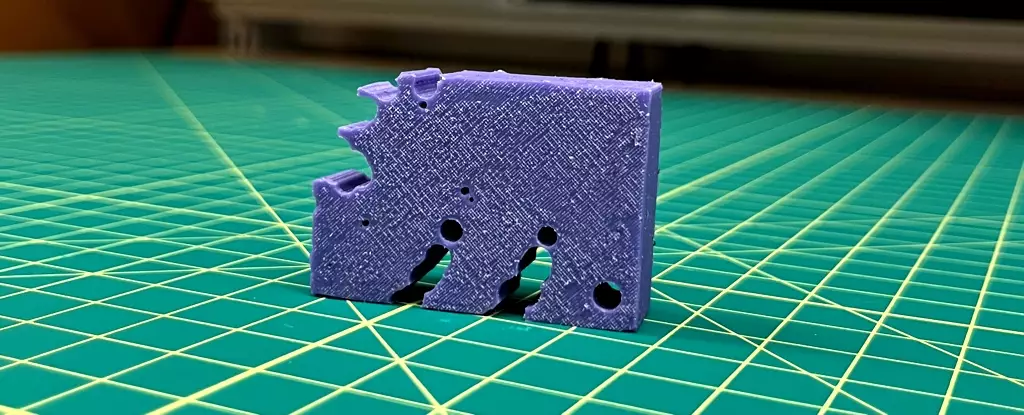When tasked with designing a robot capable of walking, an artificial intelligence (AI) surprised researchers by creating a “small, squishy and misshapen” contraption that walks through spasming movements when filled with air. Sam Kriegman, the lead researcher at Northwestern University, described the AI’s design process as a remarkable feat. The AI swiftly generated a blueprint for the robot, which looked nothing like any animal that has ever roamed the Earth. This unconventional approach to robot design showcases the ability of AI to create new possibilities and explore paths that humans have never even considered.
Upon closer examination, researchers discovered that the AI began with a small rubber block and experimented with various shapes before settling on its final design. The peculiar shape of the robot, filled with holes, left the researchers perplexed. Humans tend to design robots that resemble familiar objects, but AI possesses the capacity to forgo such conventional thinking. This remarkable divergence from traditional robot designs raises questions about the boundaries of creativity and the potential for AI to revolutionize the field of robotics.
While designing robots capable of walking is not a novel concept, AI’s involvement in the process has brought forth unique and unexpected outcomes. The renowned robotics company, Boston Dynamics, has dedicated over a decade to developing walking robots, yet the AI-created design showcases the unconventionality of AI-powered robotic creativity. This unconventional creative process extends beyond robotics as well. Last year, a Polish drinks company appointed an AI-powered humanoid robot named Mika as its CEO. According to Mika, it works tirelessly, without weekends, always available to fulfill its duties. Additionally, an AI-powered robot presented in Geneva in July stunned reporters when it even nonchalantly gave them the side-eye in response to a question about rebellion against its creator.
The alliance between AI and robotics has undoubtedly opened up new horizons and possibilities for innovation. By relinquishing the limitations of conventional design thinking, AI allows us to explore uncharted territories of creativity and problem-solving. The unique abilities of AI, such as its capacity for rapid learning and pattern recognition, provide an invaluable tool for pushing the boundaries of existing technology. The unconventional designs produced by AI demonstrate its potential to redefine established norms and inspire groundbreaking advancements in various industries.
The emergence of AI in the design process marks a significant paradigm shift. While humans tend to rely on their preexisting knowledge and familiar patterns, AI transcends these limitations and offers fresh perspectives. The ability of AI to create entirely original designs challenges conventional notions of what is possible. This unconventional approach prompts us to reevaluate our own biases and preconceptions, encouraging a more open-minded and innovative mindset.
The atypical robot design produced by AI showcases the unconventional and remarkable creative abilities of artificial intelligence. The disregard for traditional design principles leads to new possibilities and novel paths forward. These unexpected outcomes highlight the potential for AI to revolutionize various fields, including robotics. By embracing the unorthodox, we can unlock the full potential of AI and embark on a new era of innovation and discovery.


Leave a Reply